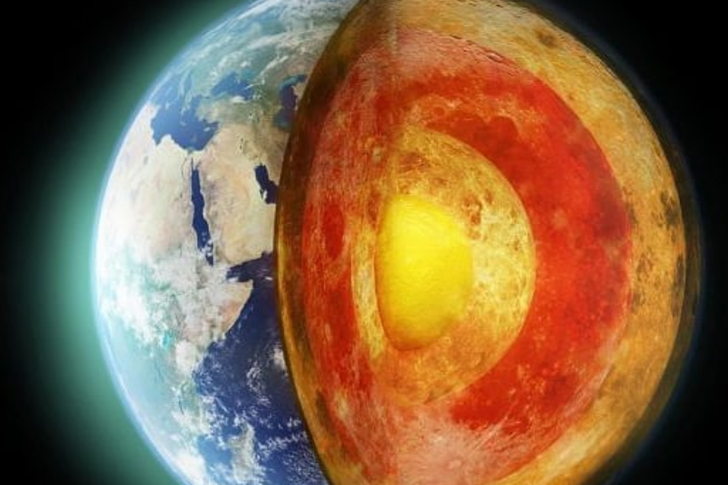Everything To Know About Our Home Planet’s Core
It is no secret that the core of our home planet, Earth, is very hot. It’s a very dense center of the planet, and it’s a ball-shaped core that lies beneath the mostly solid mantle and the brittle crust. It lies 2,900 kilometers below the Earth’s surface, and it has a radius of around 3,485 kilometers.
Still, it isn’t any go-to destination or any expensive vacation that you must consult with your financial advisor. As we said, it’s very hot as temperatures can soar up to 1,538 degrees Celsius or 2,800 degrees Fahrenheit. That’s hot enough to melt iron!
Formation of Our Core

It may be interesting to know that our home planet, Earth is older than the core. The planet formed around 4.5 billion years, and overall, it was a spewing, uniform ball of hot rock. Excess heat from planetary formation through collision, compression, and accretion of space rock, as well as Radioactive decay, caused our home planet to be even hotter.
After around half a billion years, our planet’s temperature had heated up to 1,538 degrees Celsius. This pivotal moment marks the iron catastrophe, and it allowed the more rapid movement of the Earth’s molten, rocky material at the time. The iron catastrophe receives credit for playing a vital role in the formation of our core.
Silicates, water, air, and everything that’s relatively buoyant stayed close to the Earth’s exterior, which eventually became the Earth’s early crust and mantle. On the other hand, droplets of nickel, iron, and other heavy materials gravitated towards the center of the Earth, thus becoming our planet’s early core.
Two Different Layers

The Earth’s magnificent core is composed of two layers. One is the outer core which borders the inner core and the mantle. Meanwhile, the boundary that’s separating these regions is the Bullen discontinuity.
Outer Core
Starting off with the outer core, it’s a region that spans 2,200 kilometers or 1,367 miles thick. The planet’s outer core is mostly made up of liquid iron and nickel. This liquid iron and nickel material are very hot, and one can’t simply swipe their credit cards and access this area as temperatures can soar up to 4,500 and 5,500 degrees Celsius or 8,132- and 9,932-degrees Fahrenheit.
The liquid metal composition of the outer core has quite a low viscosity. With this fact, the liquid metal materials on the outer core can be easily deformed, and it’s malleable. The outer core is the site of violent turbulence. However, this violent and hostile place deserves credit for creating and sustaining the Earth’s magnetic field.
The hottest part of the Earth’s core isn’t the inner or outer core. It’s actually the Bullen discontinuity, where temperatures can easily soar up to 6,000 degrees Celsius. If you’re wondering how hot that is, that’s as hot as the surface of the Sun!
Inner Core

The inner core is also incredibly hot, and it’s a dense ball of mostly iron. It spans 1,220 kilometers or 758 miles, and temperatures can easily soar up to 5,200 degrees Celsius or 9,392 degrees Fahrenheit. Besides the intense heat, you’ll also be dealing with the intense pressure of roughly 3.6 million (atm), which is 3.6 million times stronger than the normal pressure we feel at sea level.
The temperatures in the planet’s inner core are far above iron’s melting point. Unlike the outer core, the inner core isn’t liquid, nor is it even molten. As we said, the inner core has intense pressure, and it prevents the iron from melting. Due to this fact, geophysicists give credit to the inner core for being their example of a plasma that’s behaving like a solid.
The inner core is separated by the liquid outer core from the rest of the Earth. As a result, the planet’s inner core rotates differently than the rest of the Earth. The inner core rotates eastward, like its surface, but a little bit faster, resulting in an extra rotation around every 1,000 years.
How Do They Study The Core?

There’s no way for Geoscientists to directly study the core and everything to know about it. All of the information that mankind gathered throughout the years about the planet’s core comes from a sophisticated reading of seismic data.
Computer analysis, analysis of meteorites, and lab experiments involving temperature and pressure also deserve credit for allowing humans to know more about this essential part of the planet.
Inquiry and research about the core are mostly conducted by measuring seismic waves. Shock waves released by earthquakes can also shed light on the behavior of the core. Interestingly, it was seismic waves that allowed geoscientists to identify the composition and structure of the core itself.
Photo Source: Instagram

Recent Comments